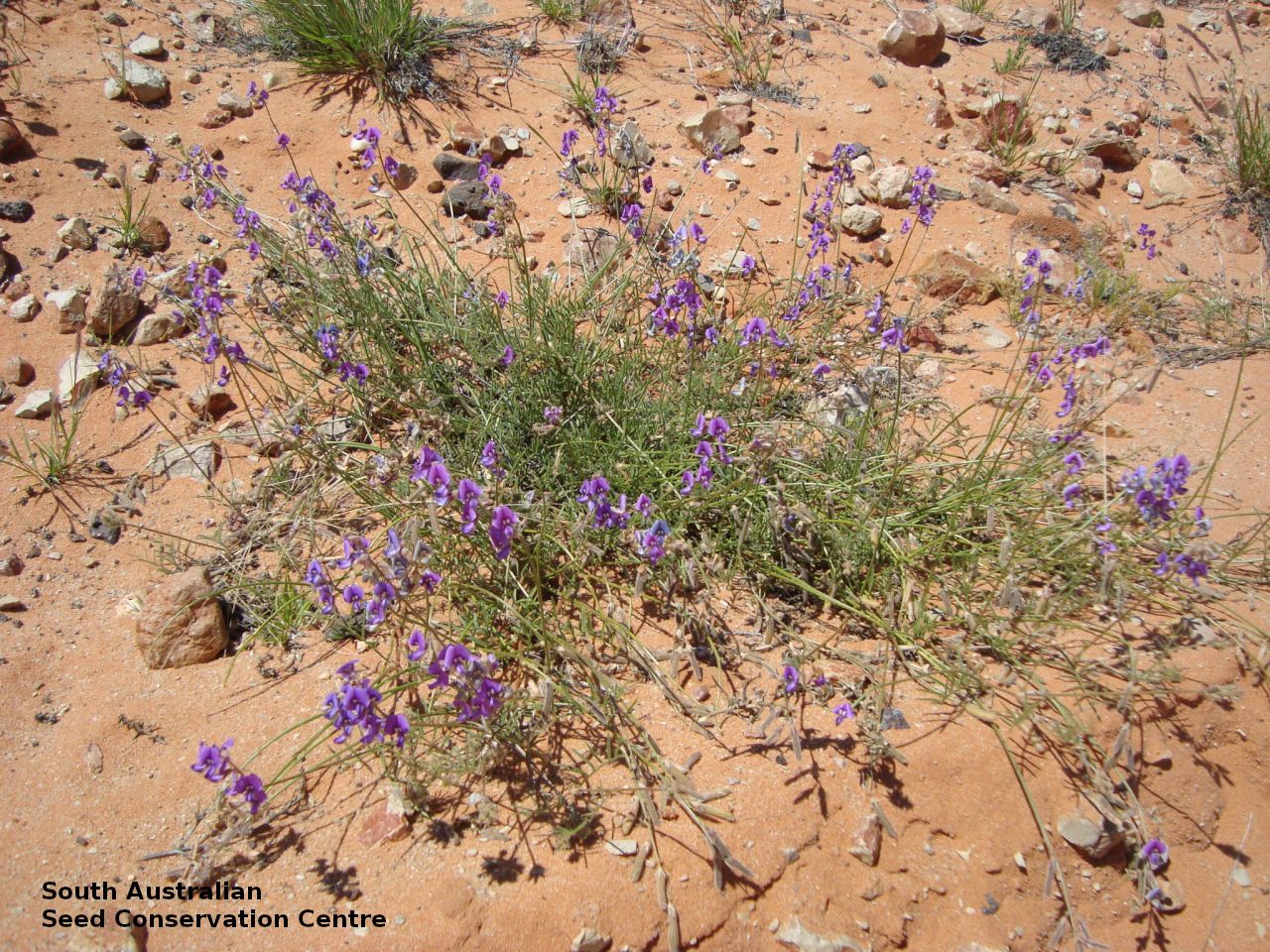
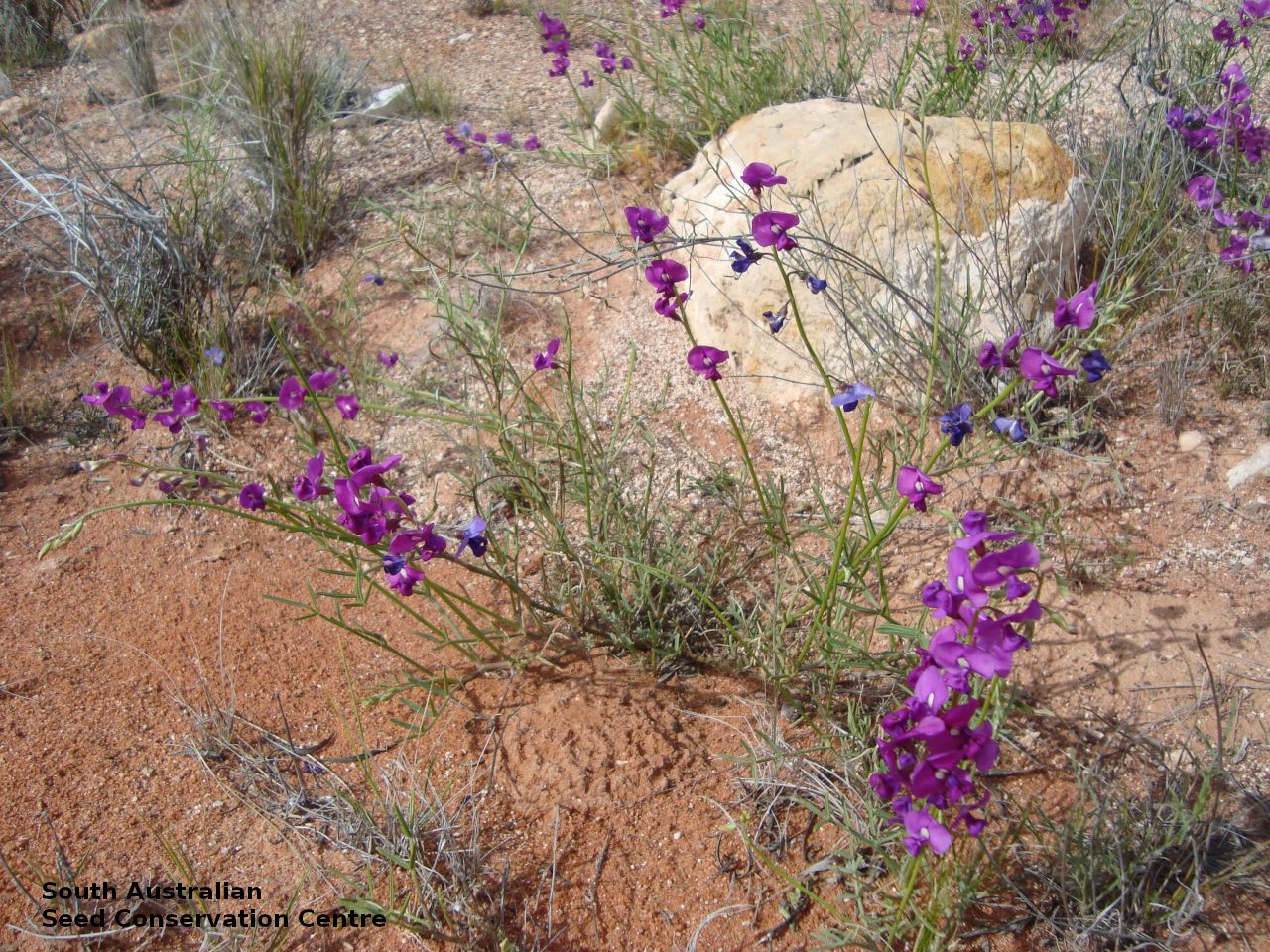
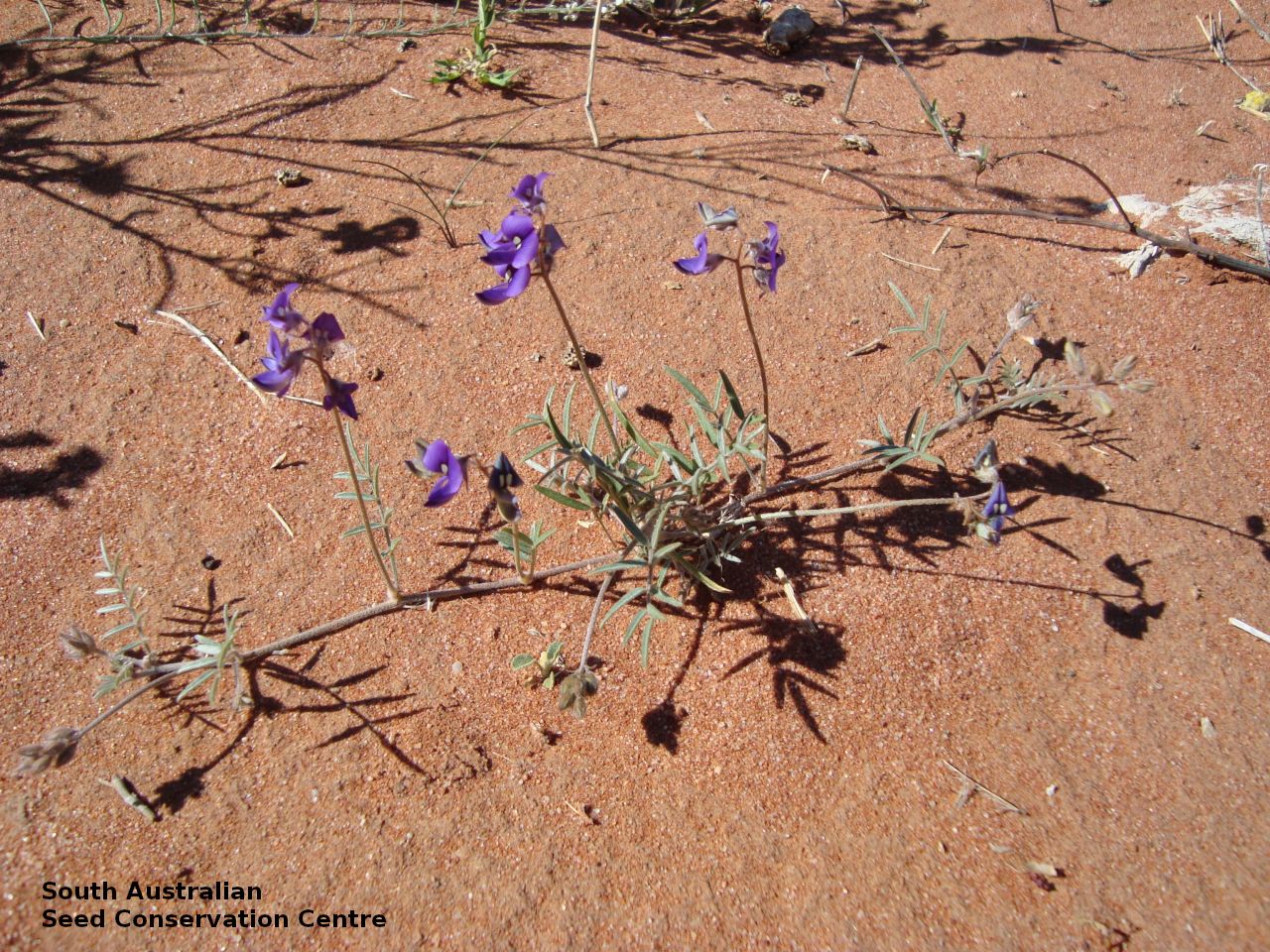
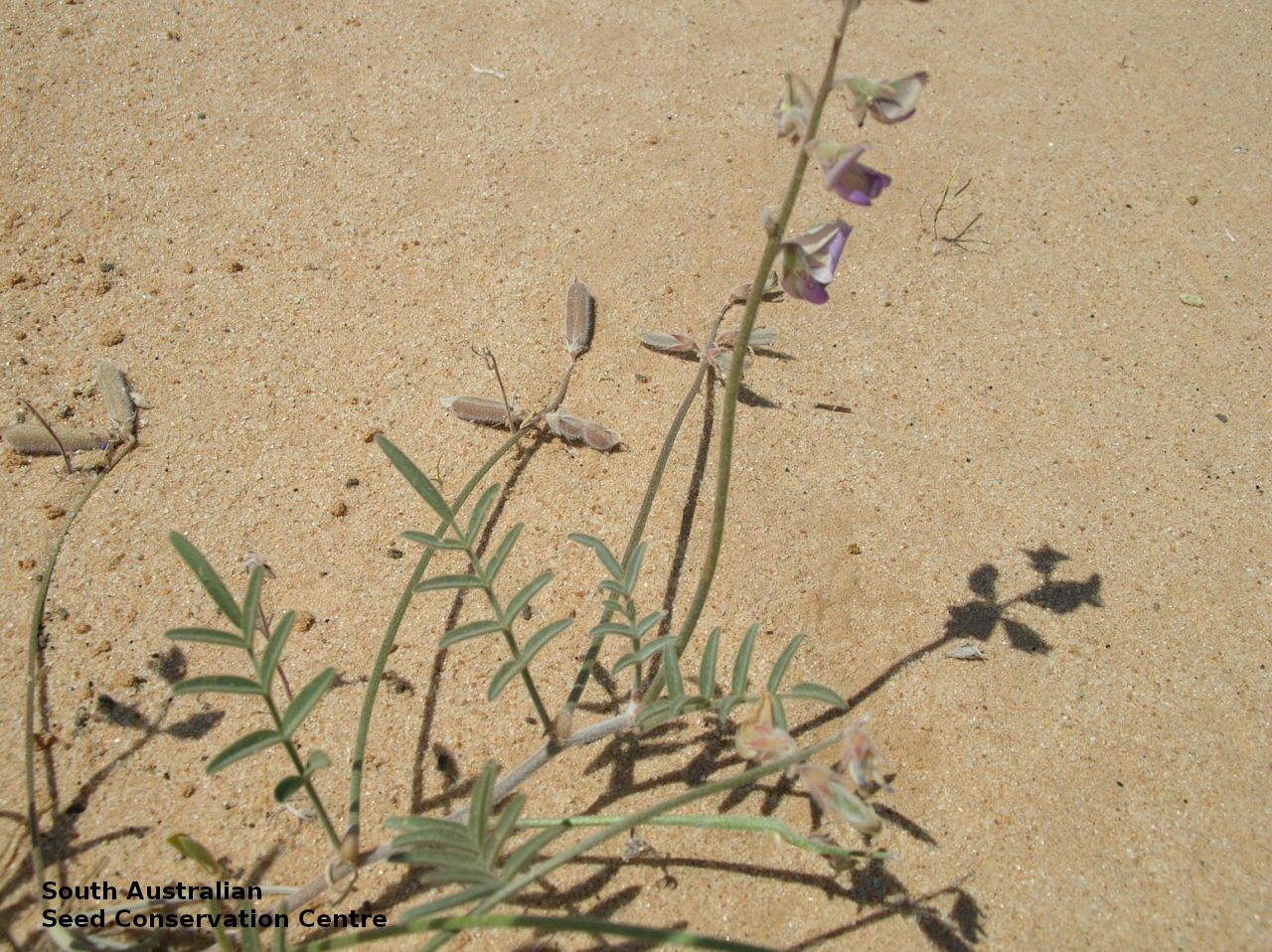
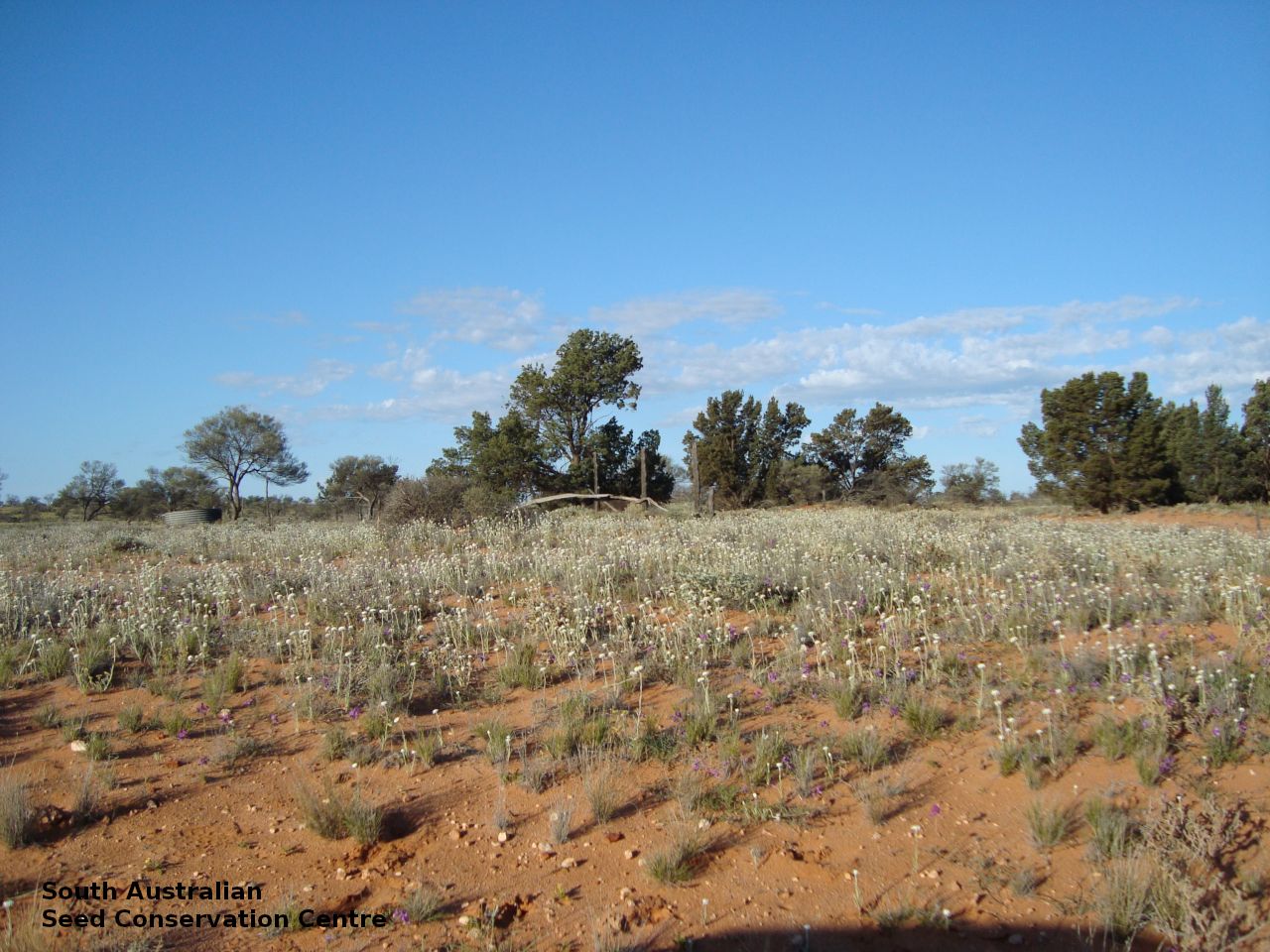
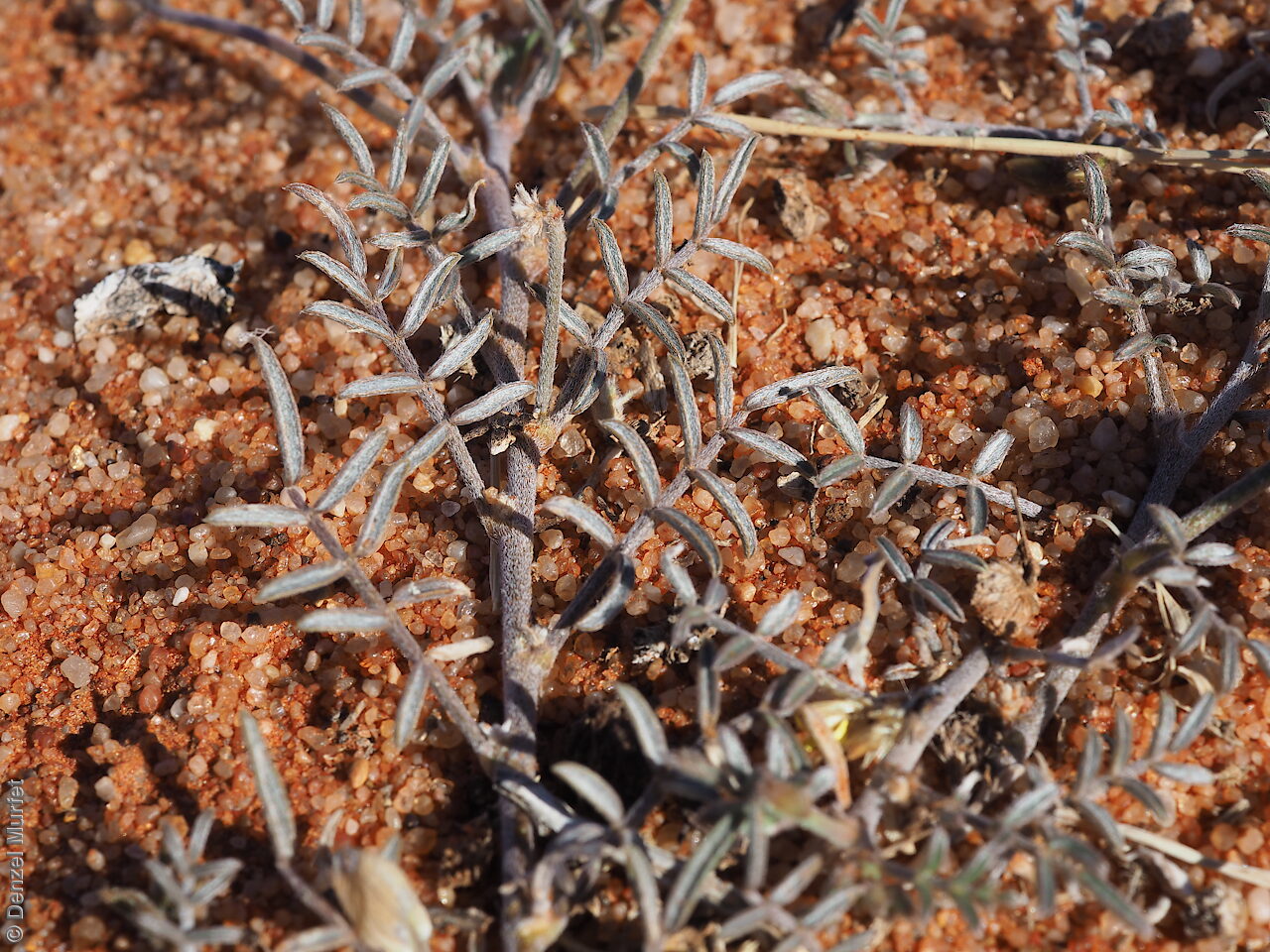
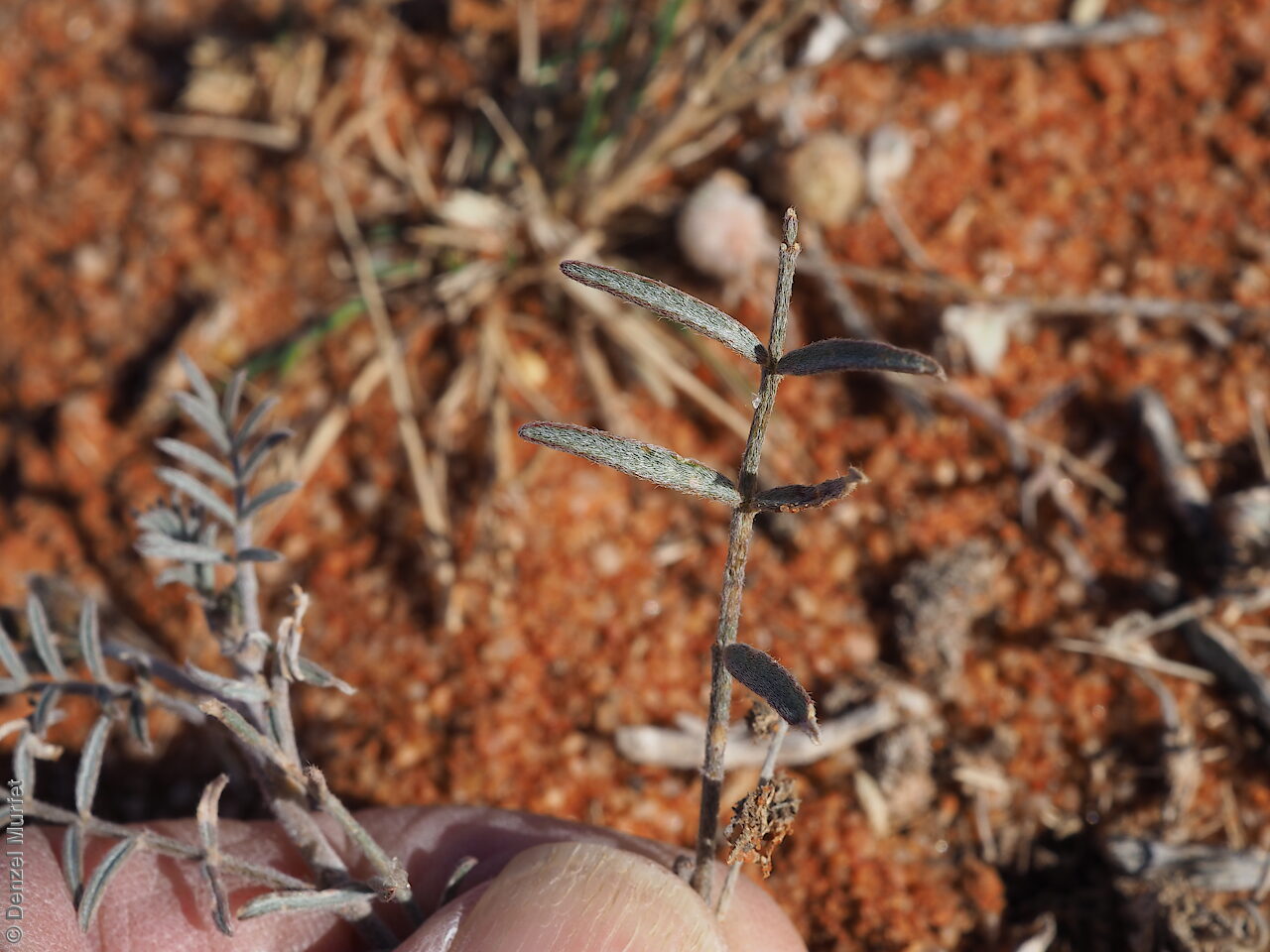
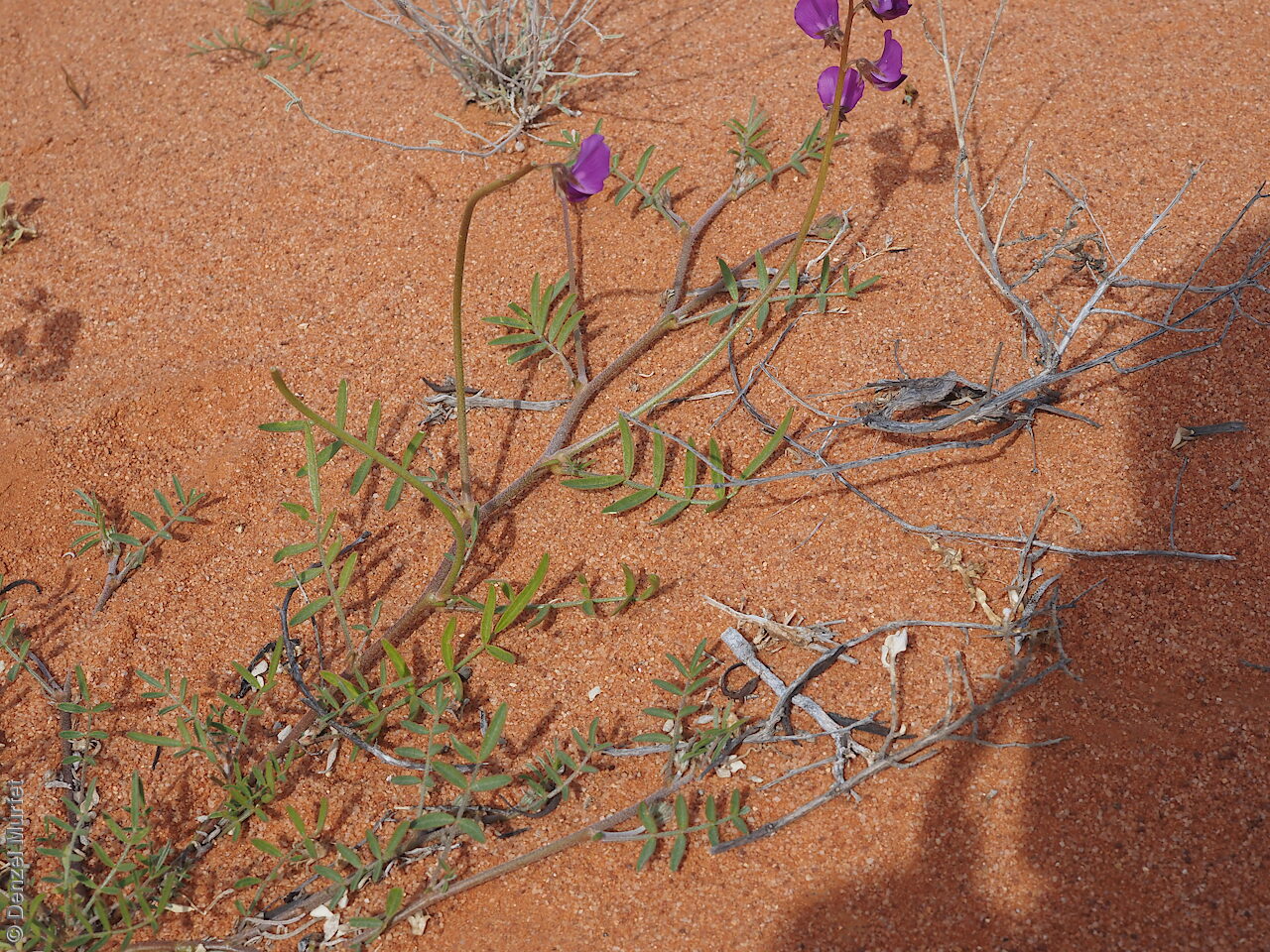

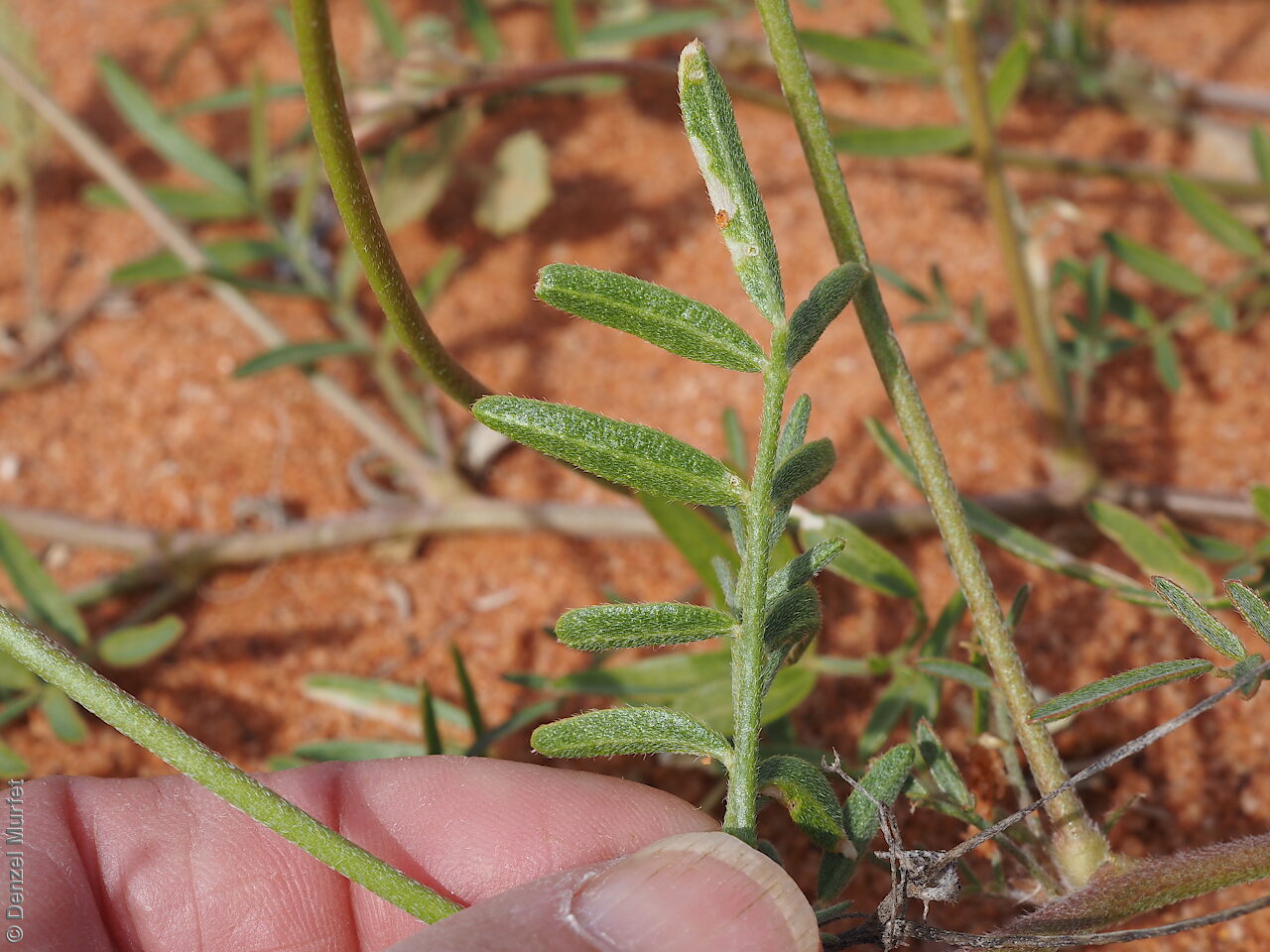
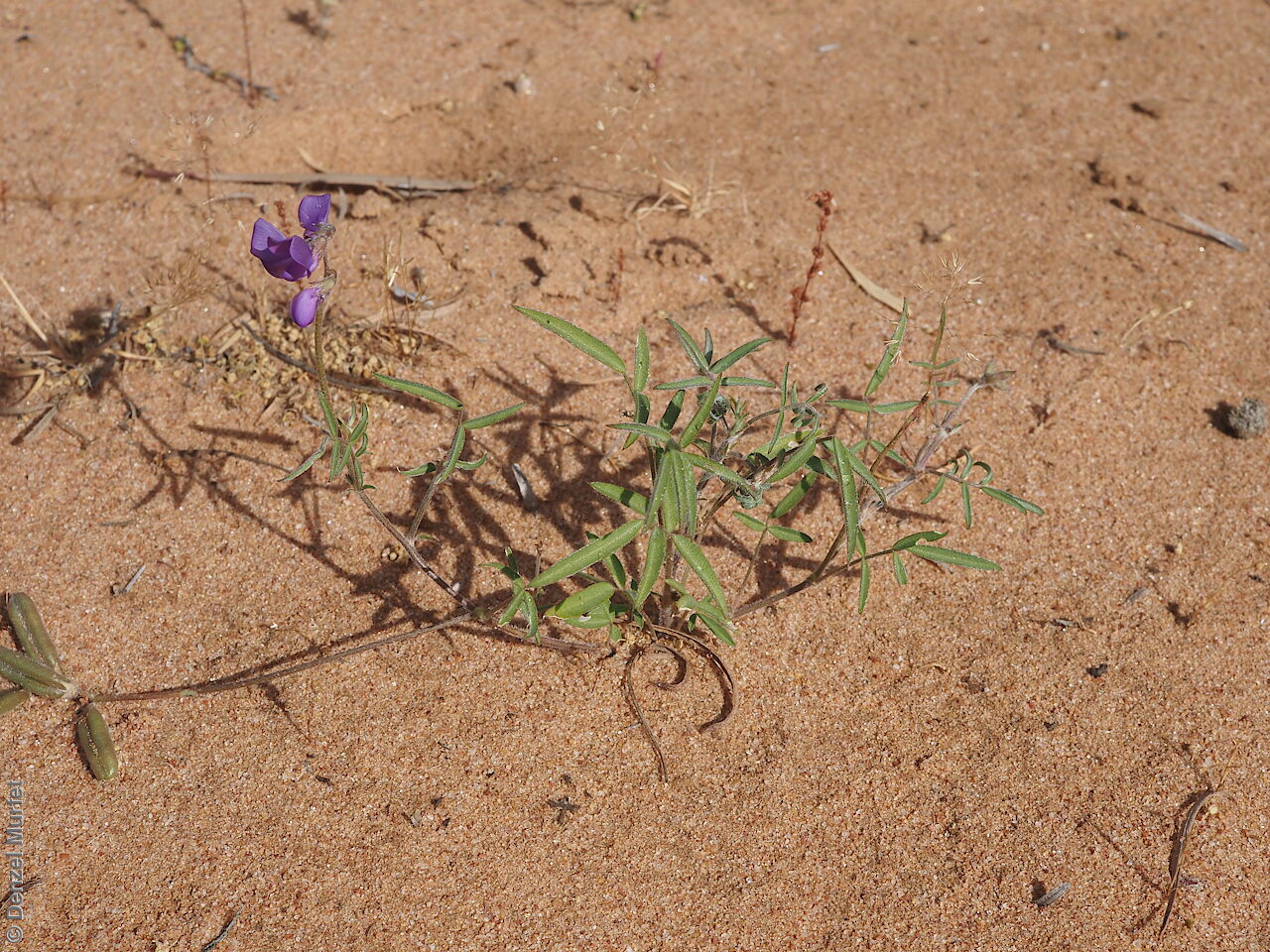
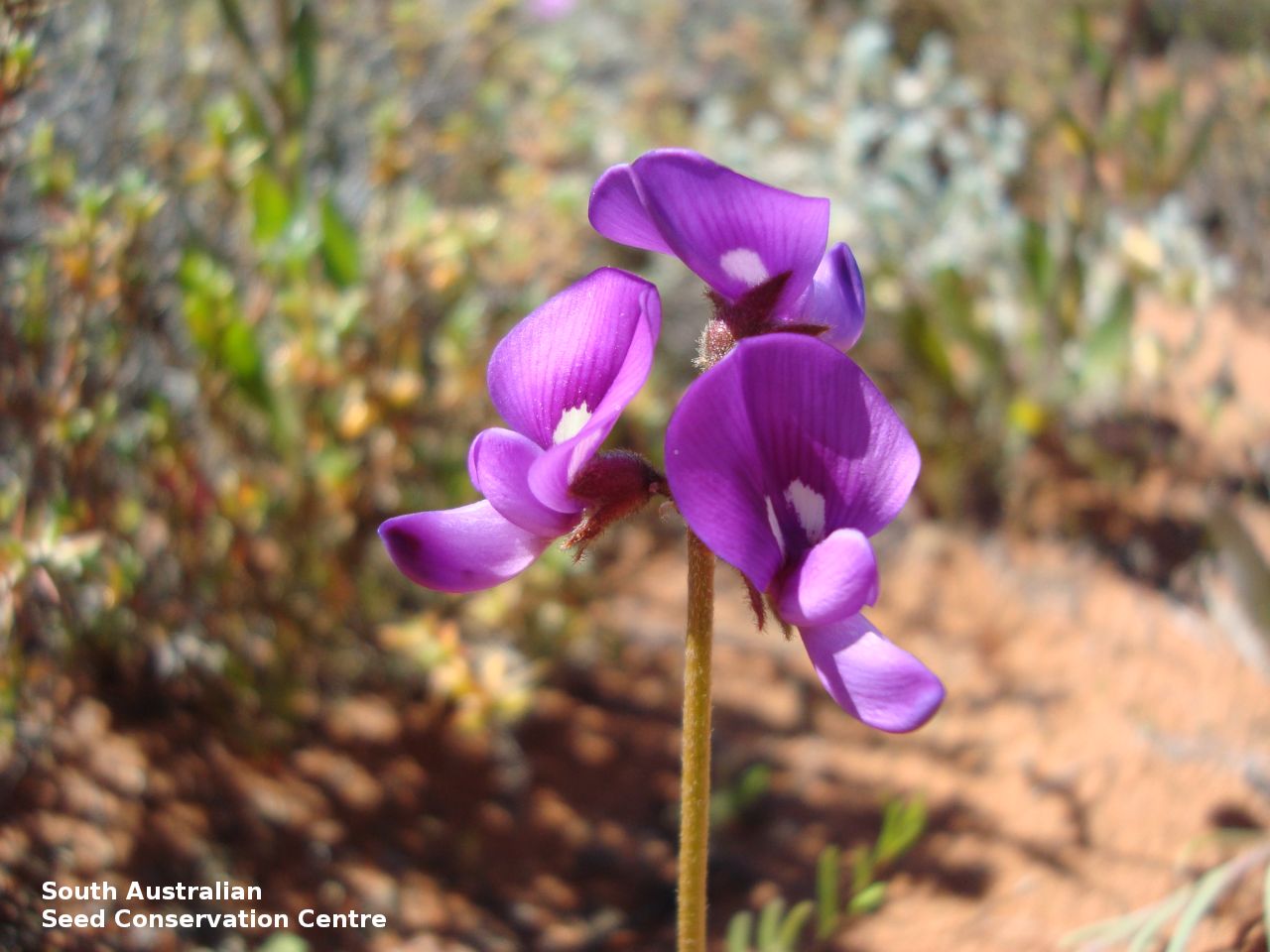
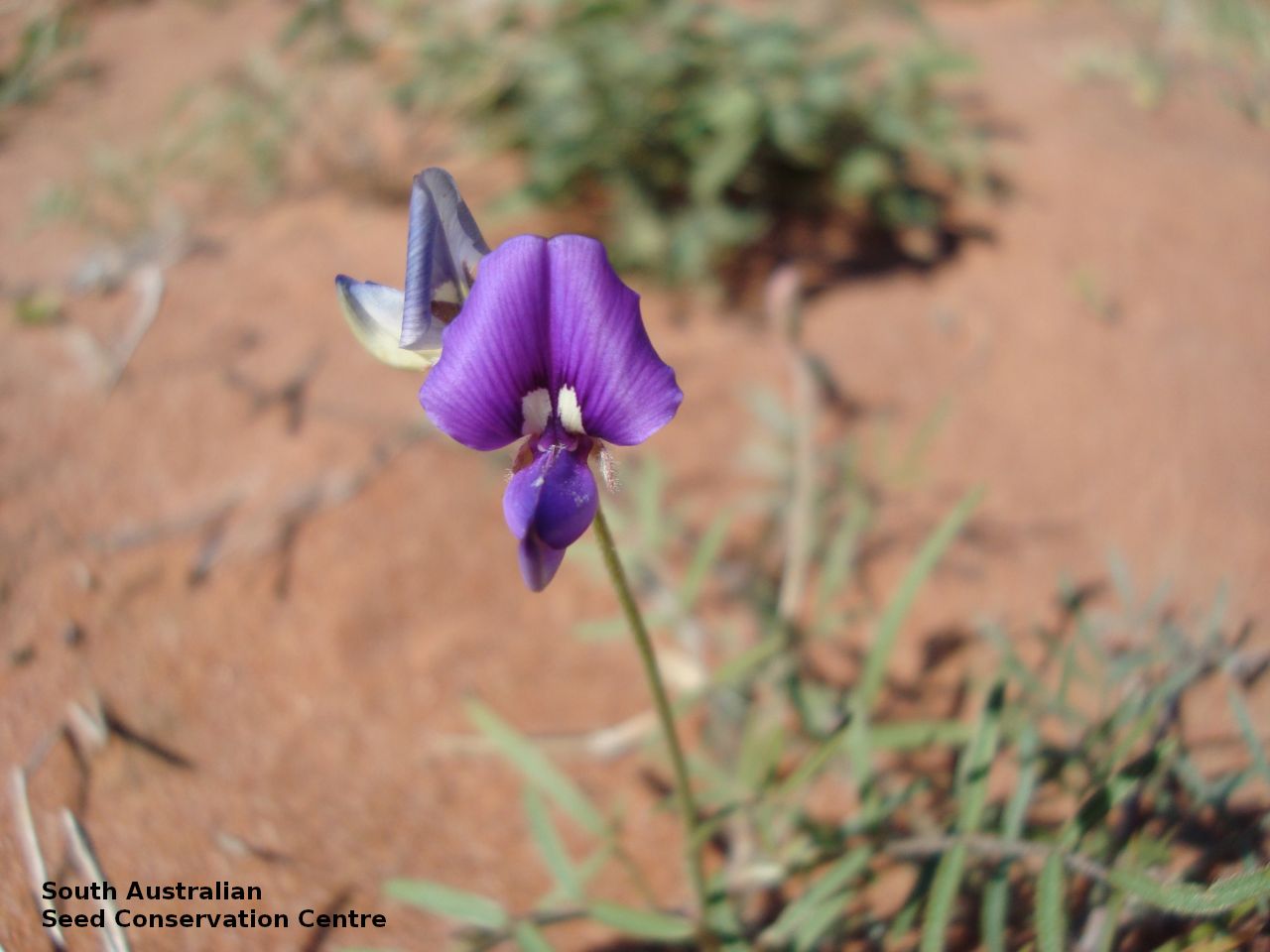
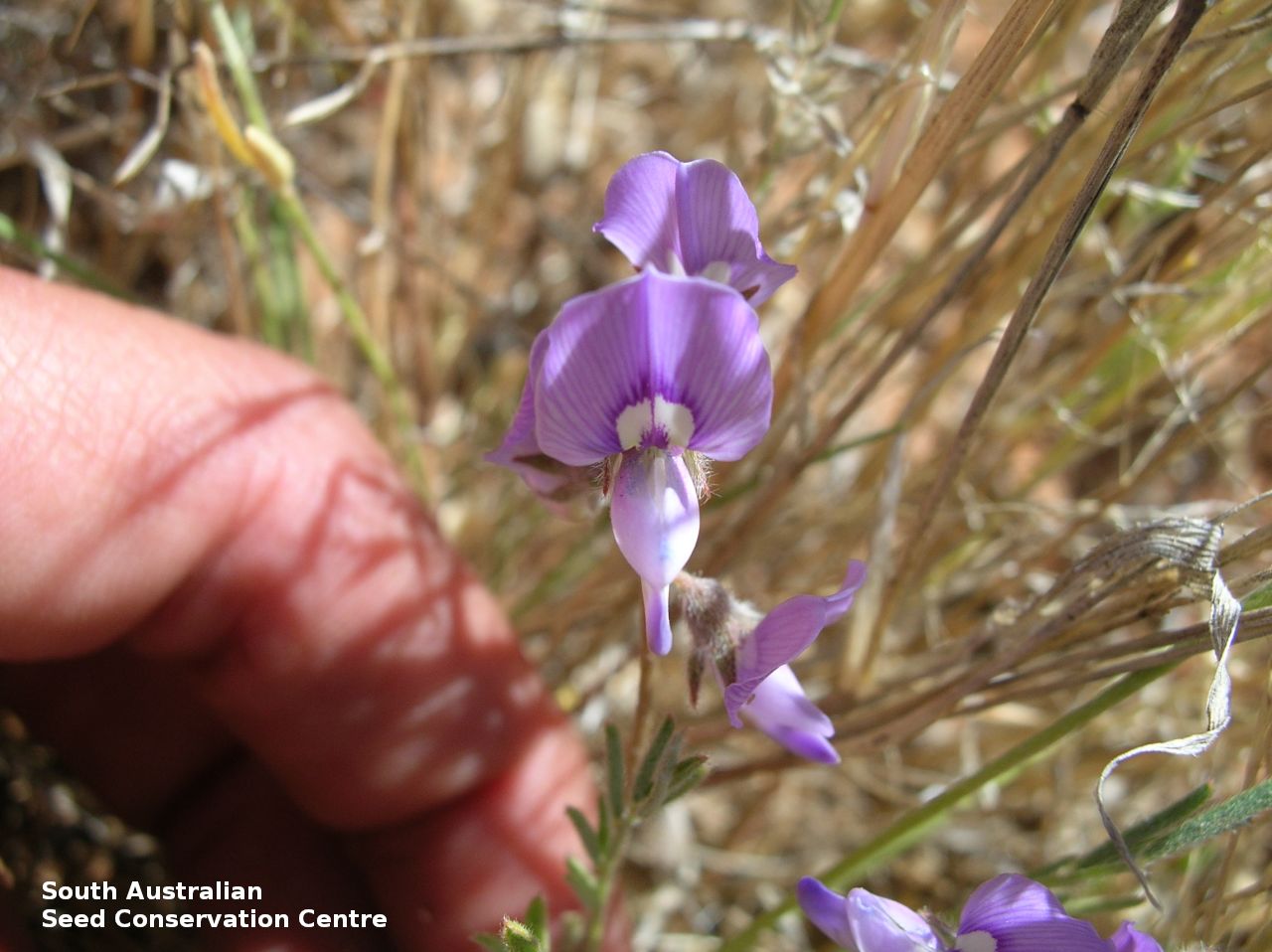
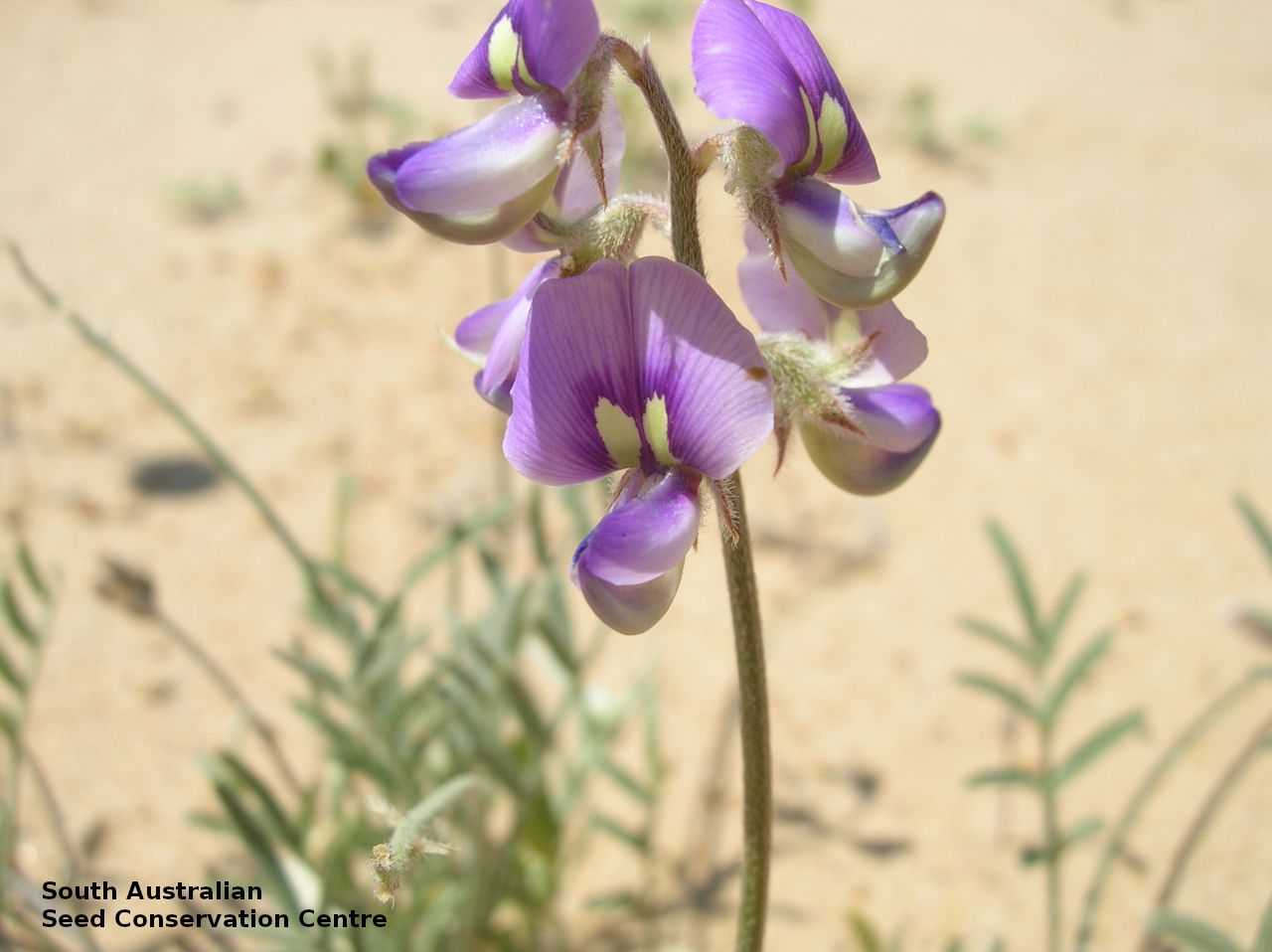
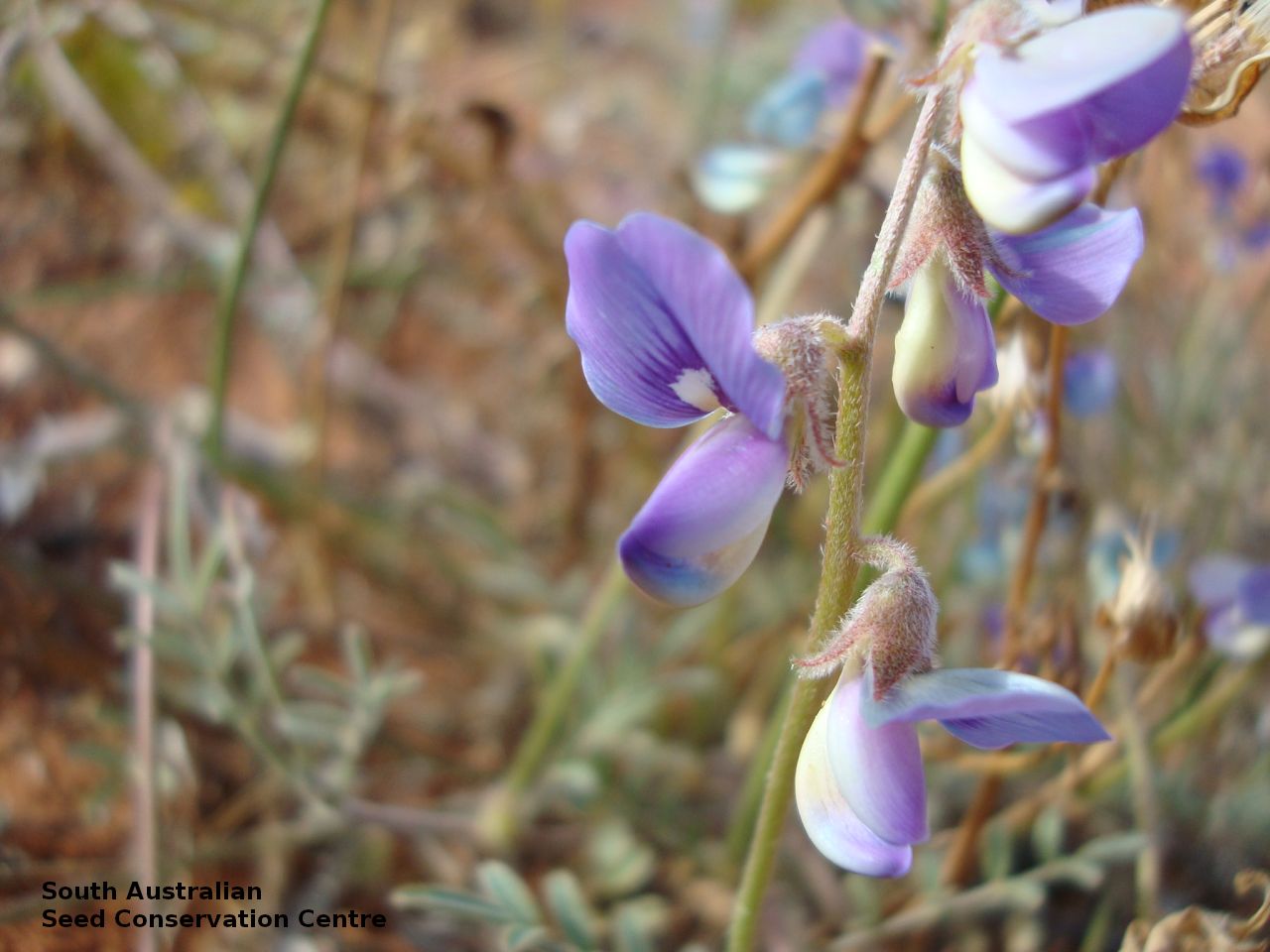
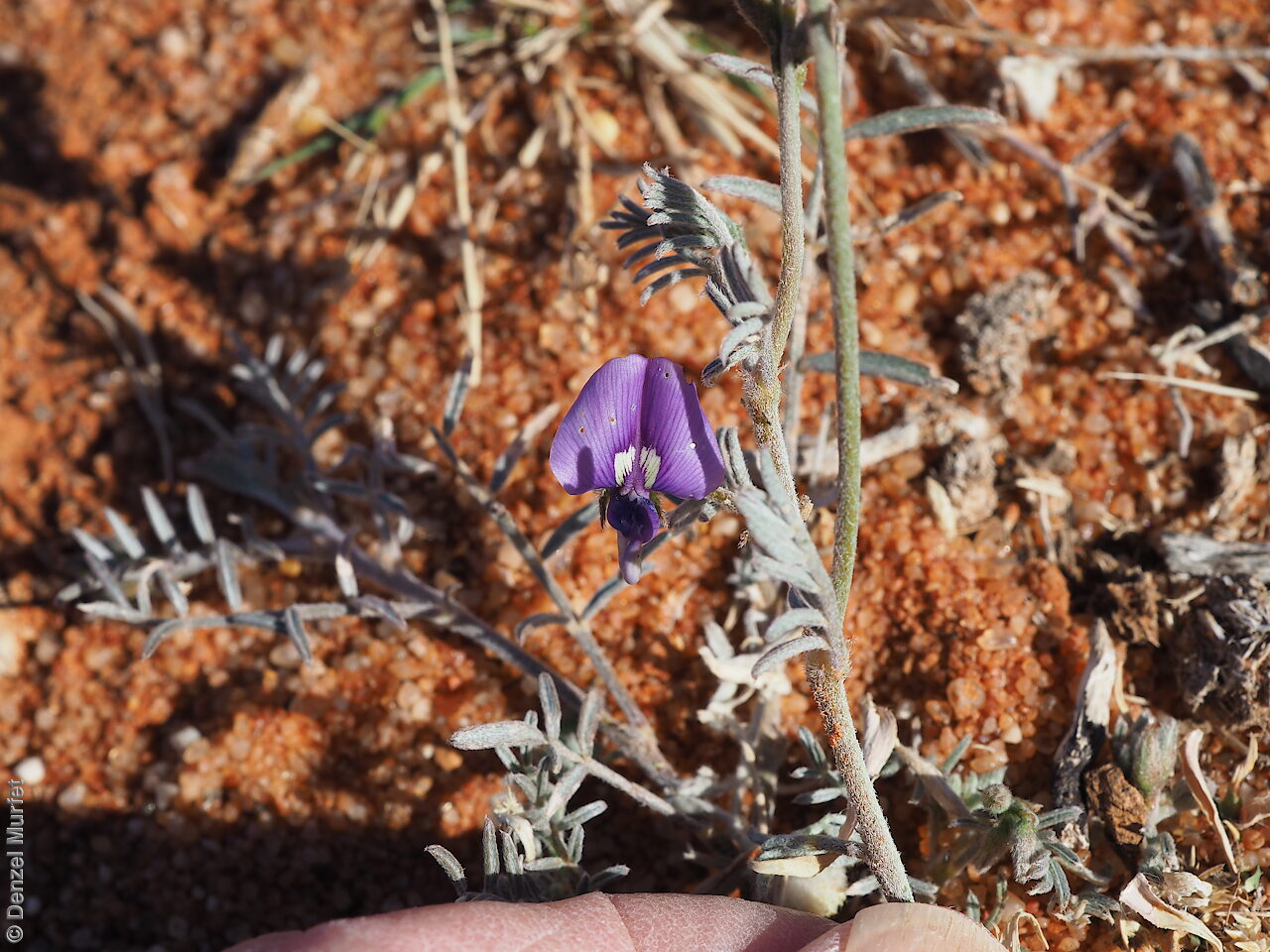
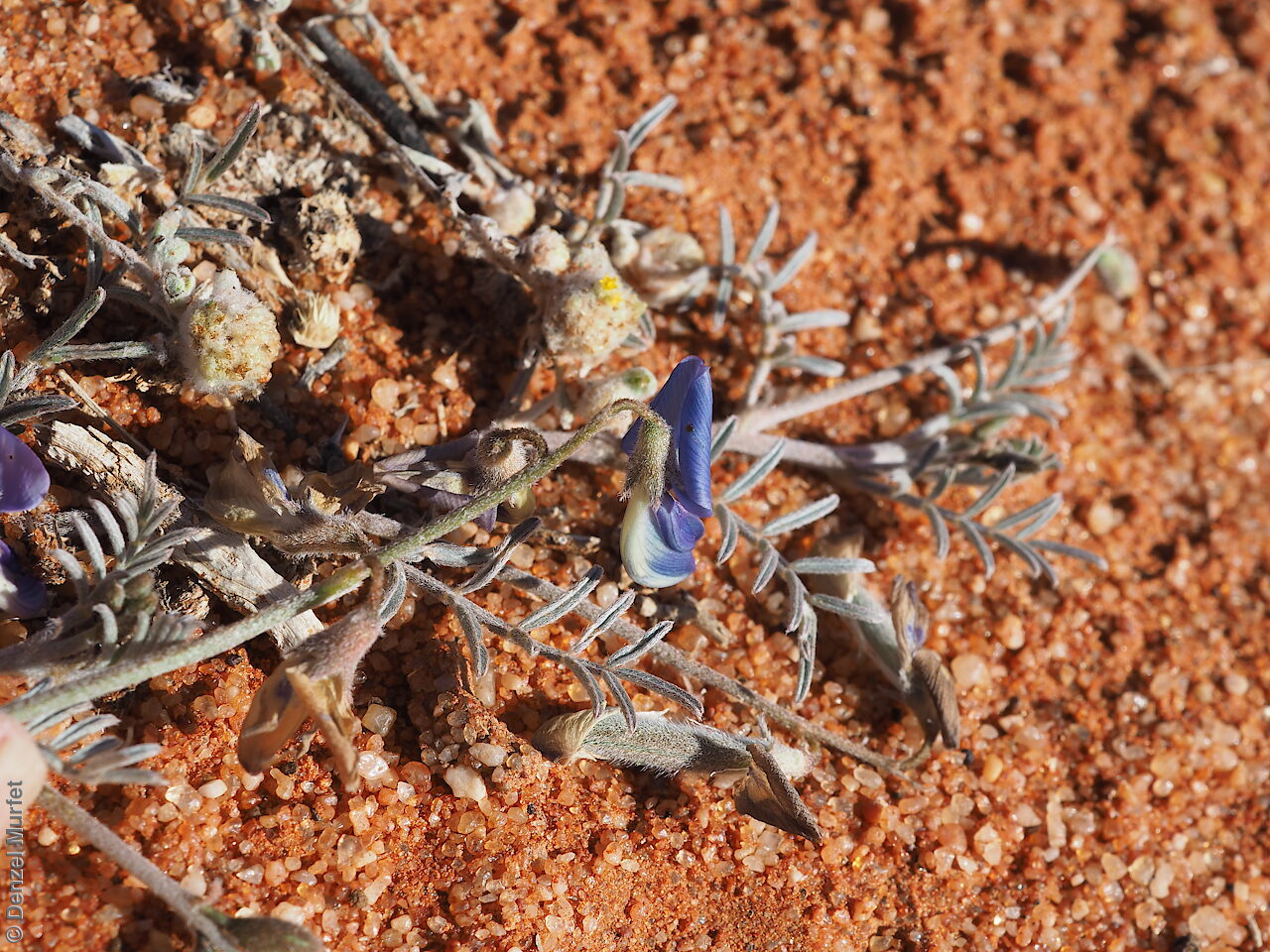
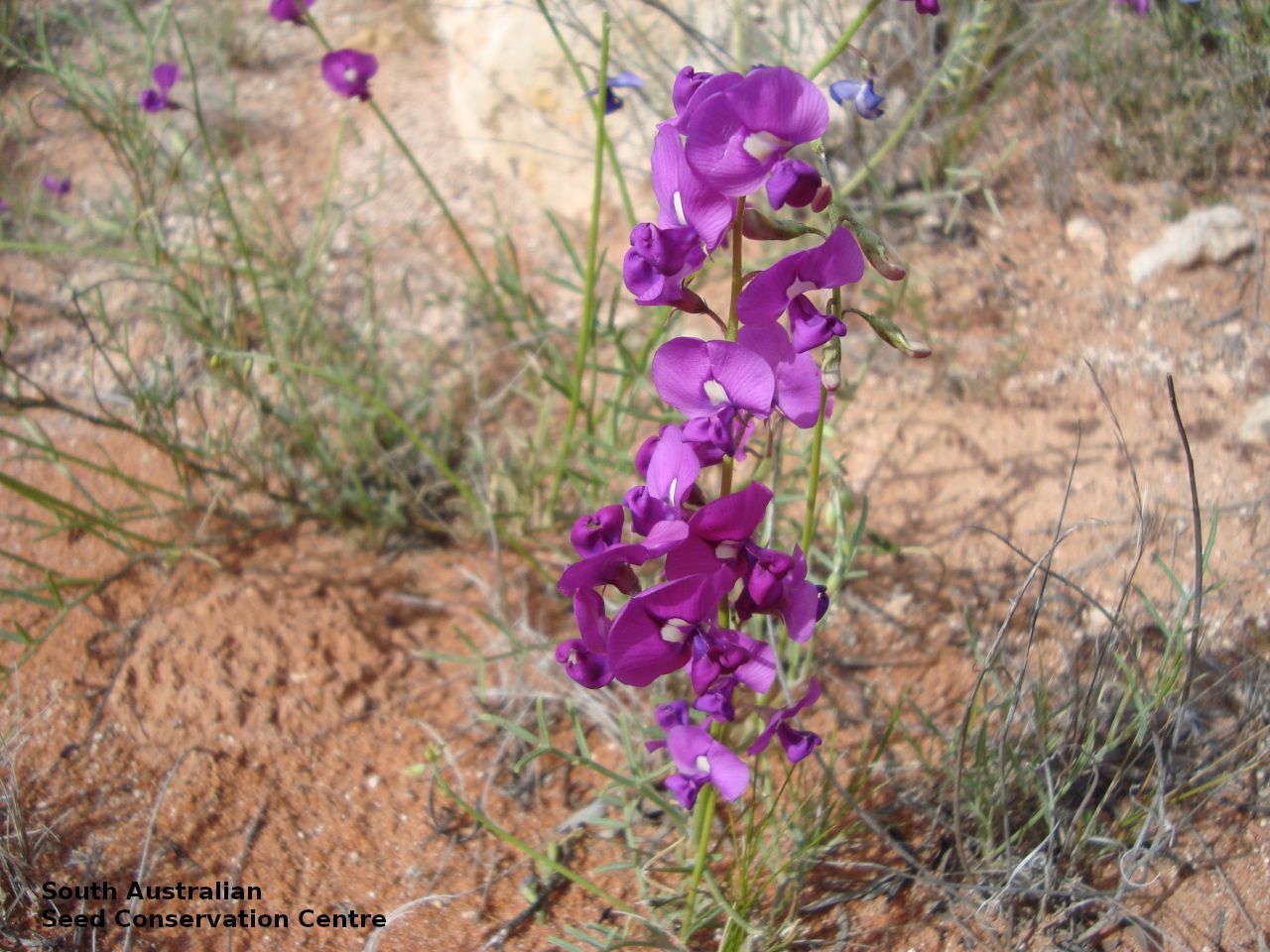
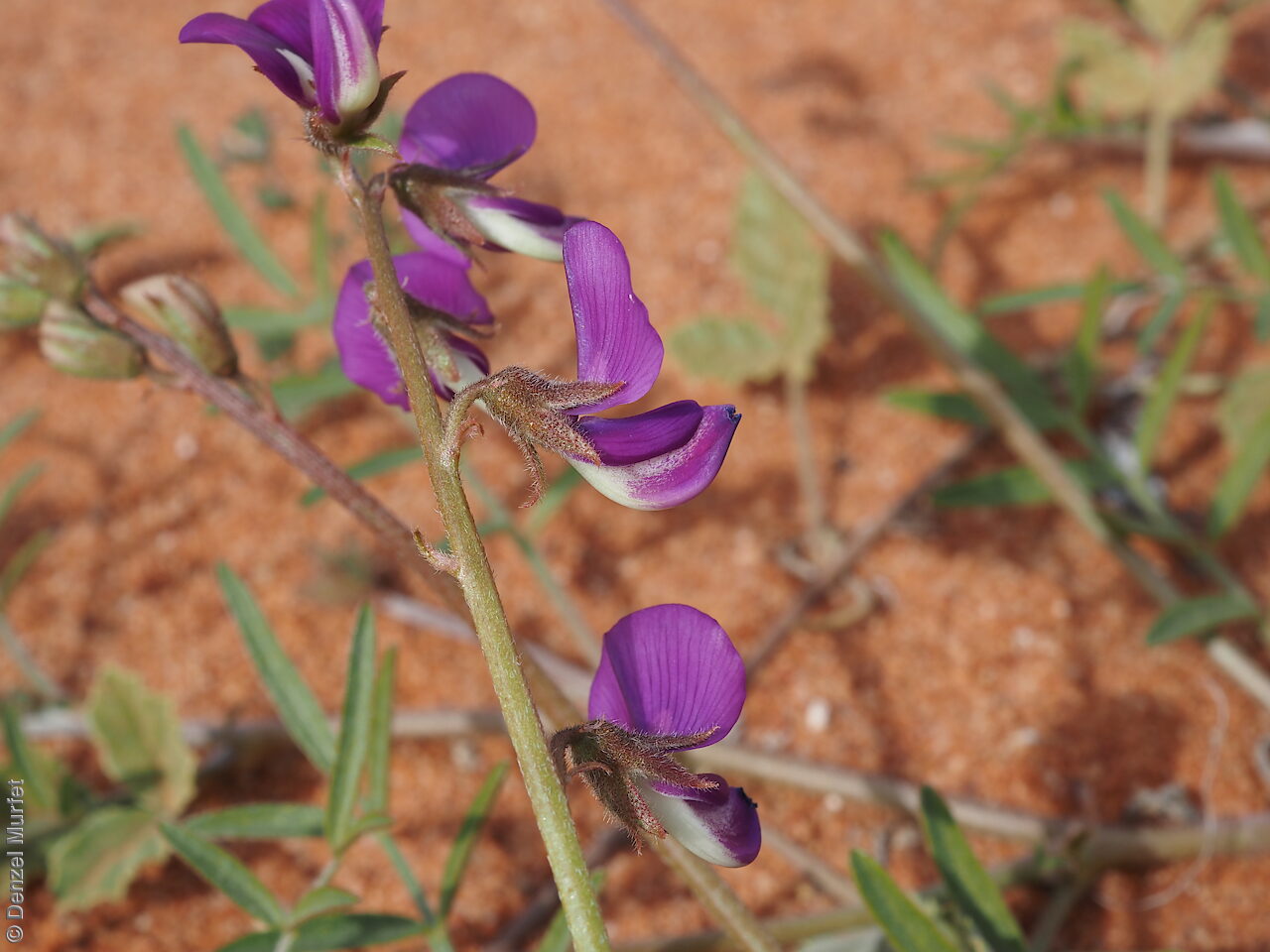
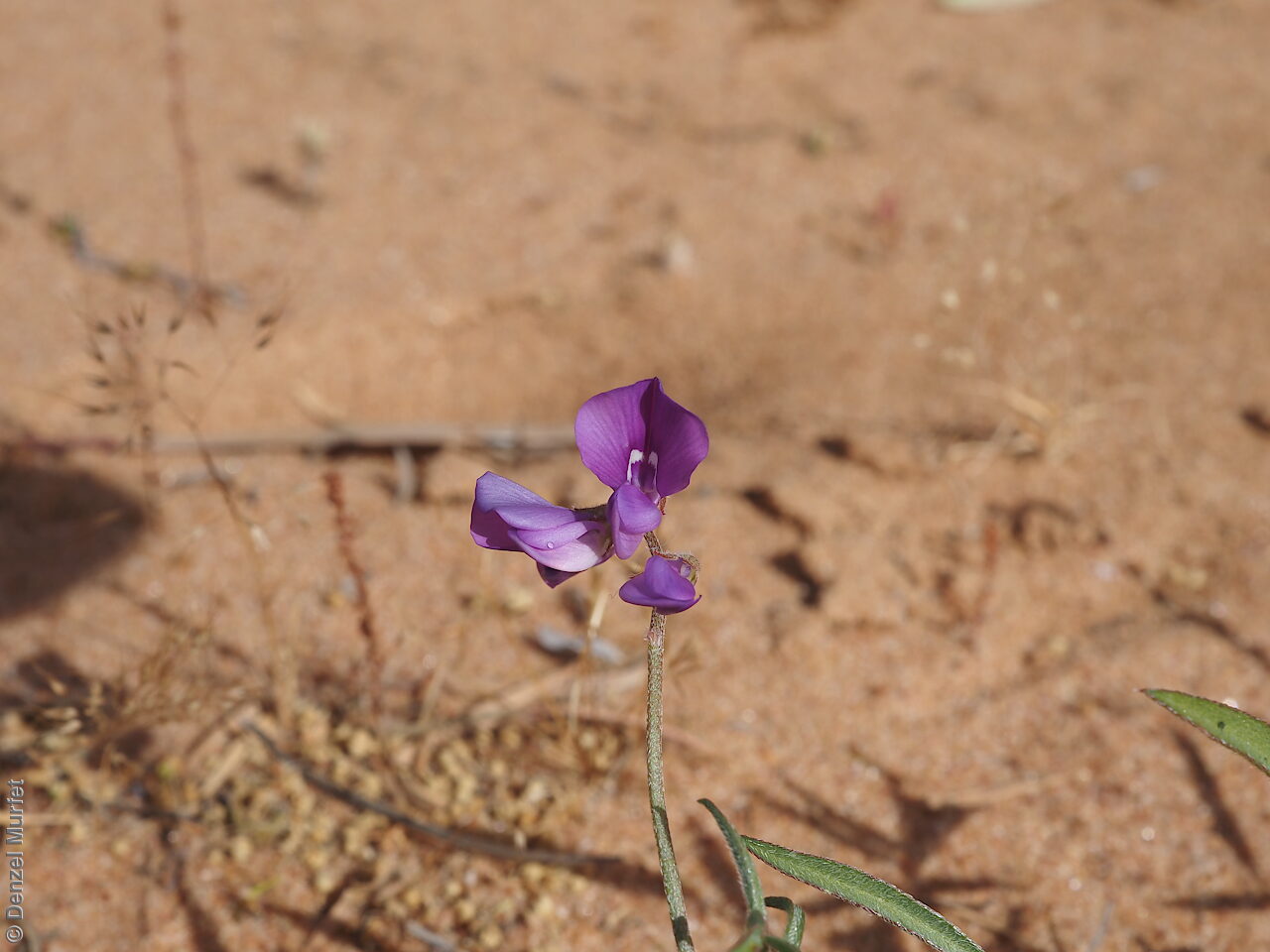
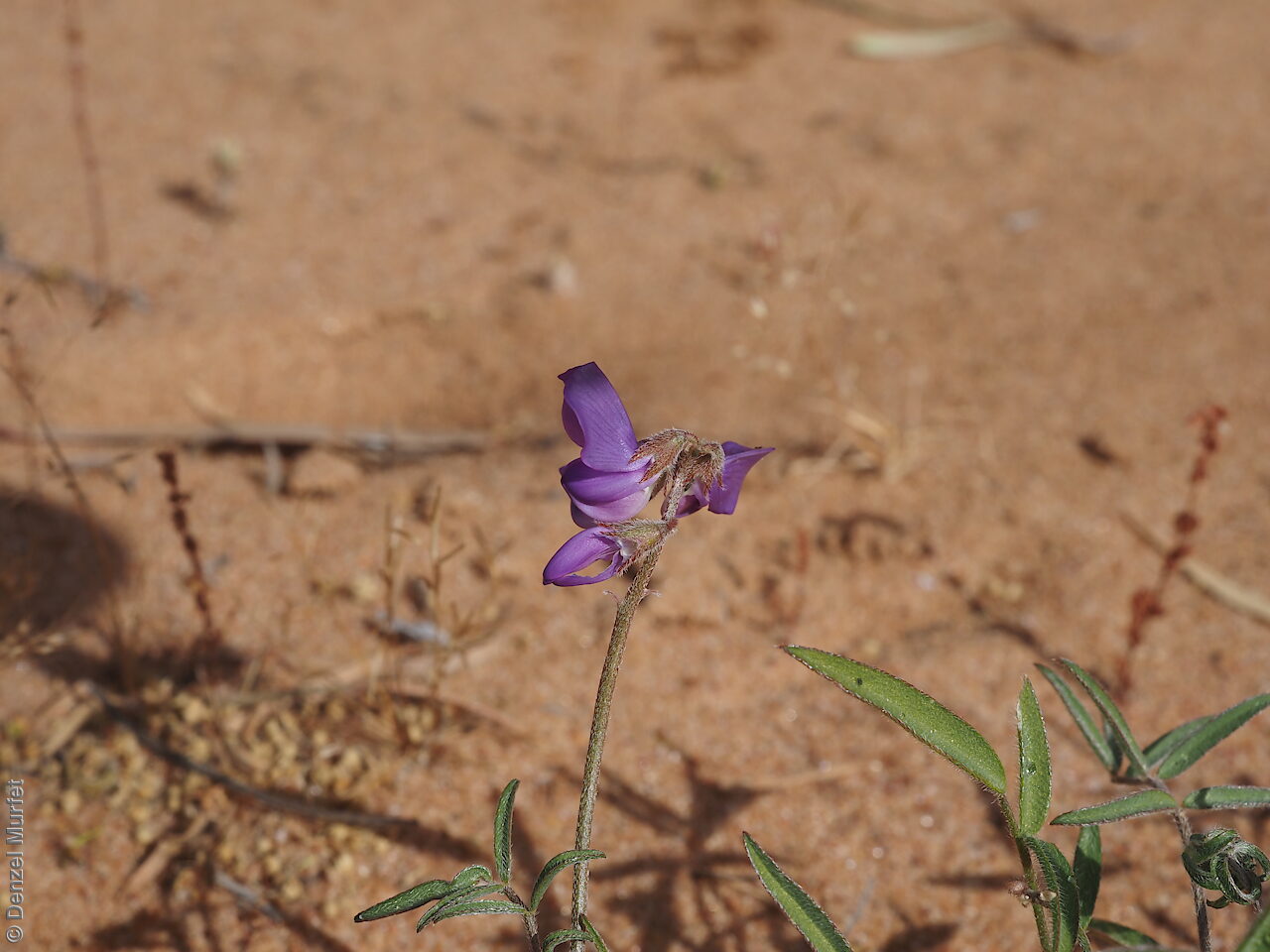
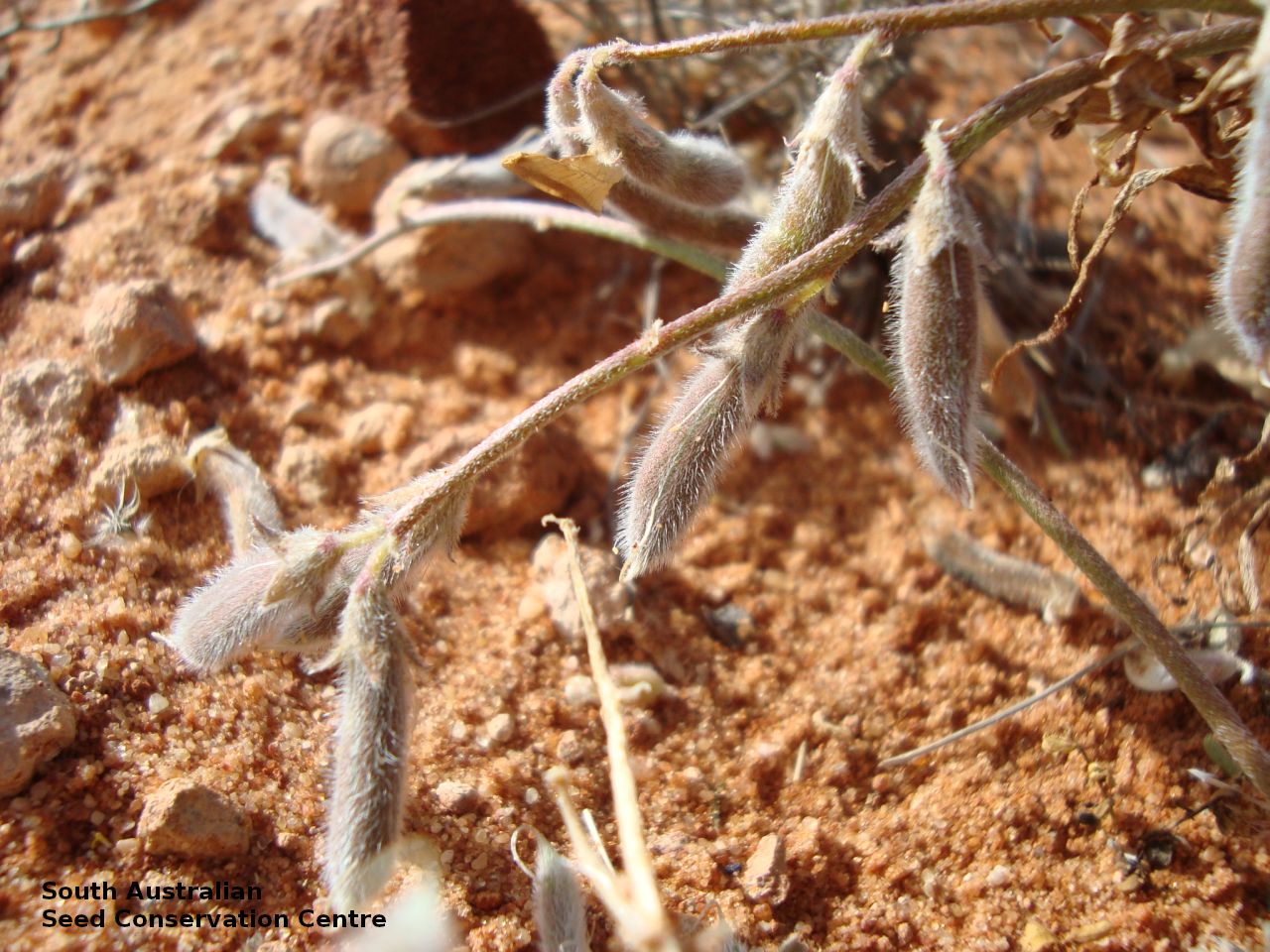

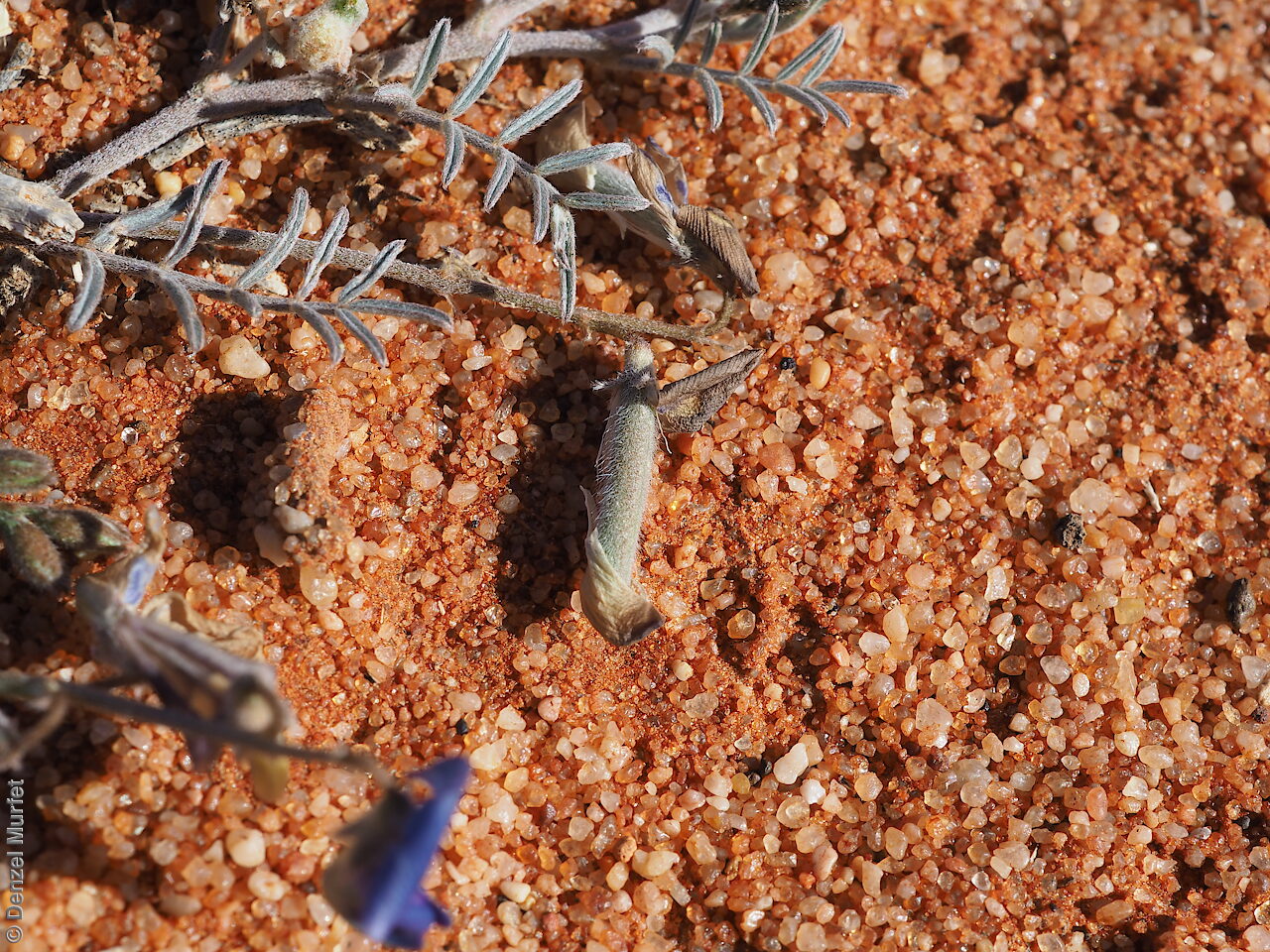
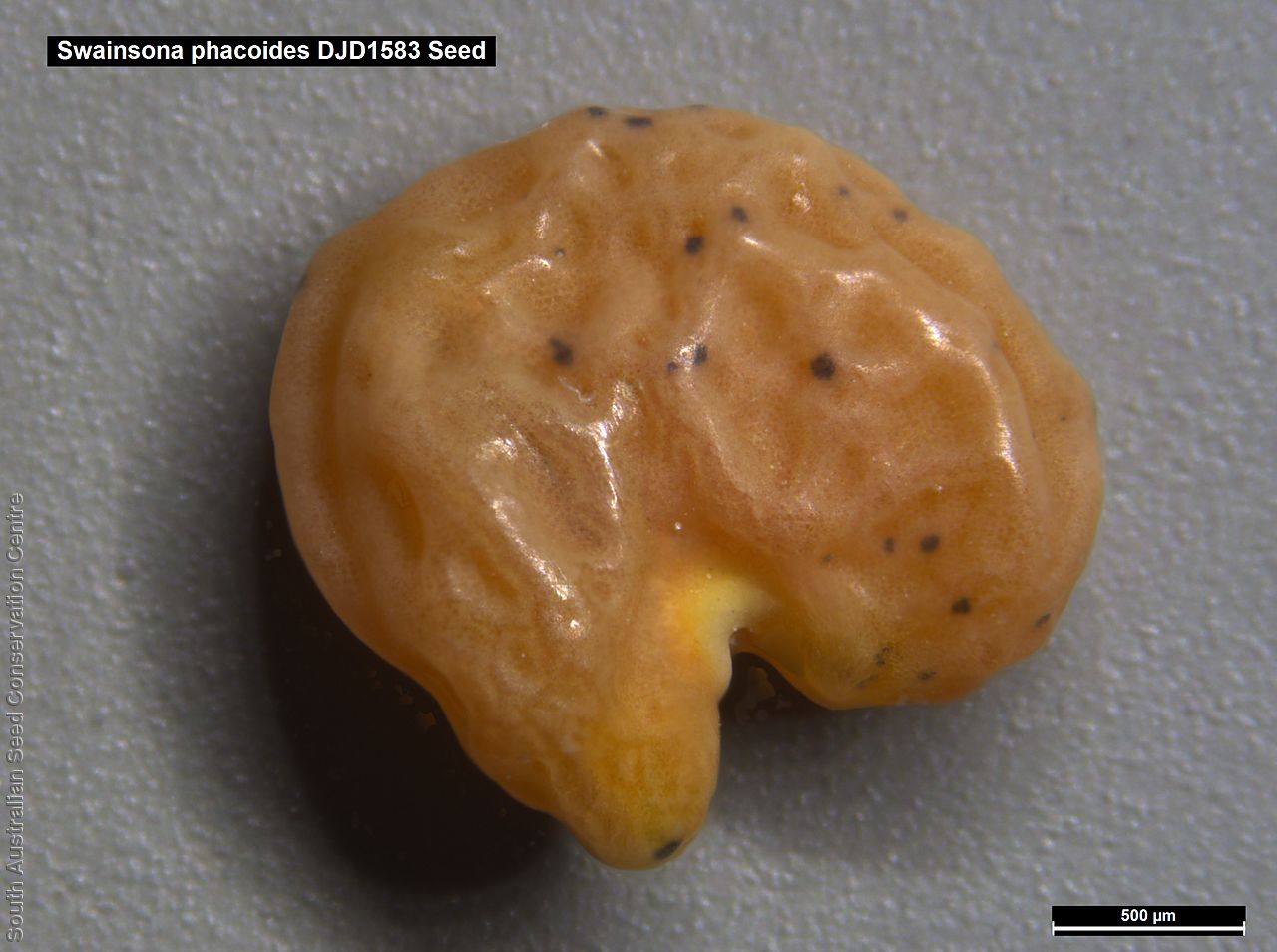

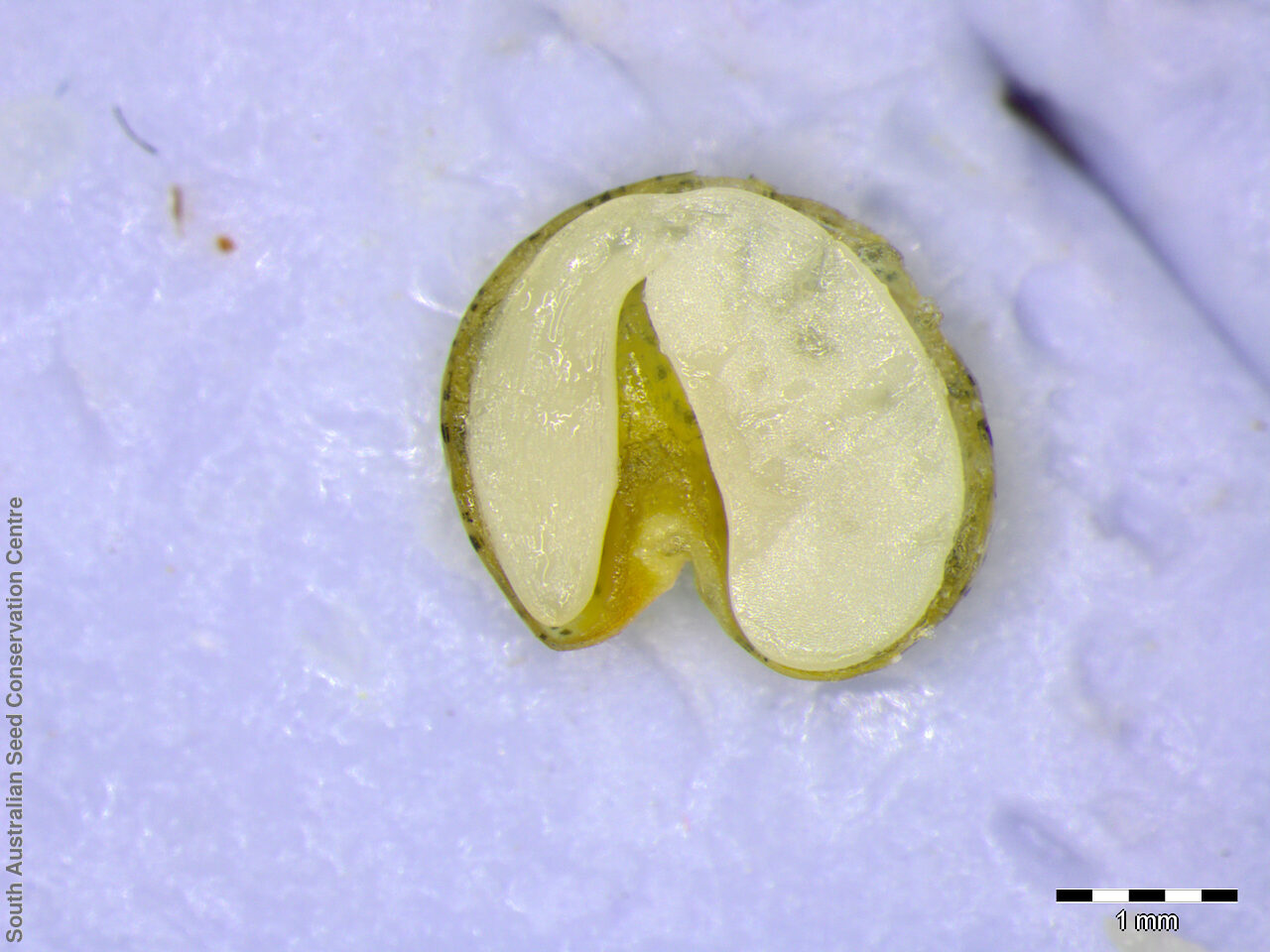
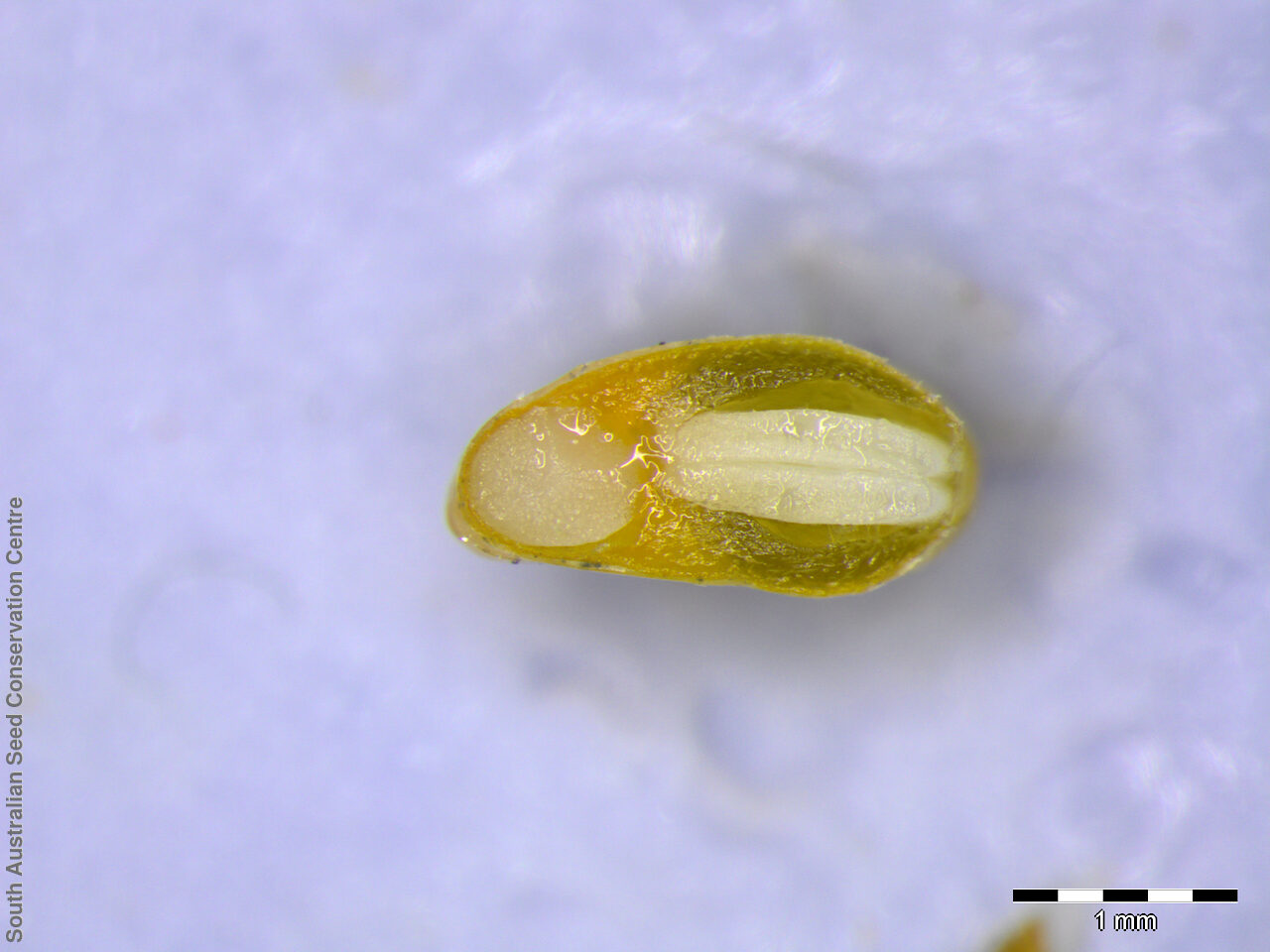

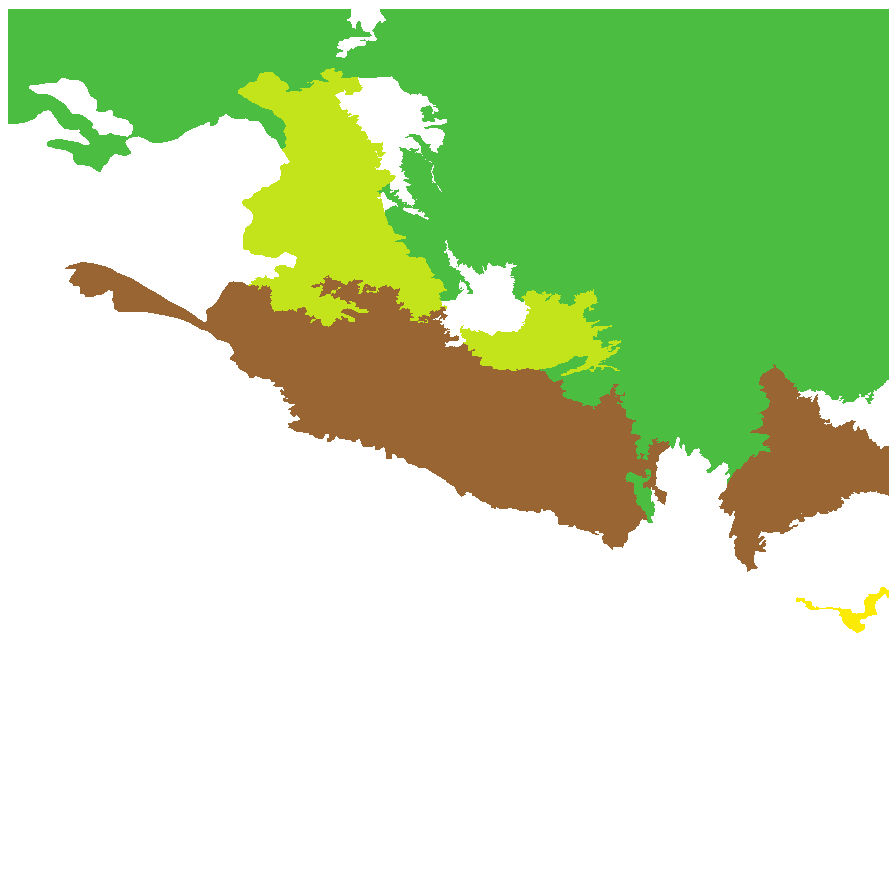
Botanical art
Prior names
Swainsona phacoides var. parviflora
Swainsona uniflora
Swainsona phacoides var. oocarpa
Swainsona phacoides var. argyrophylla
Common names
Lilac Darling Pea
Dwarf Swainson-pea
Etymology
Swainsona named after Isaac Swainson (1746-1812), an English scientist and horticulturalist who had a private botanic garden near London. Phacoides meaning resemble to the genus Phaca, an old genus of Fabaceae family which is now divided into a number of genera.
Distribution and status
Found in a variety of soils, associated with inland dunes and stony soils such as creek beds across much of inland South Australia. Also found in all other mainly states. Native. Common in South Australia. Common in other states.
Herbarium regions: North Western, Lake Eyre, Gairdner-Torrens, Flinders Ranges, Eastern, Eyre Peninsula, Murray
NRM regions: Alinytjara Wilurara, South Australian Arid Lands, South Australian Murray-Darling Basin
AVH map: SA distribution map (external link)
Plant description
A prostrate or ascending plant with numerous hairy stems arising from a taproot. Leaves variable in length, 5-10mm long with 5-13 long narrow leaflets covered in fine hairs. Flowers purple clustered at the end of a long stalk. Fruits are dark brown, long pod 15-35mm long covered in dense hairs. Seeds are orange to brown, mottled, semi-flat reniform seeds to 2mm long with a wrinkled surface. Seed embryo type is bent.
Seed collection and propagation
Collect seeds between September and November. Collect mature pods, dark brown containing hard seeds. Mature pods can be found lying on the ground next to the plant containing hard seeds. When dried the pods become hard and difficult to open. Use a rubber bung to rub the pods or break the pods open with your fingers to dislodge the seeds. Use a sieve to separate the unwanted material. Store the seeds with a desiccant such as dried silica beads or dry rice, in an air tight container in a cool and dry place. From seven collections, the seed viability were high, ranging from 85% to 100%. This species has physical dormancy that needs to be overcome for the seed to germinate (e.g. nicking or softening the seed coat).
| Location | No. of seeds (weight grams) | Number of plants | Date collected | Collection number Collection location | Date stored | % Viability | Storage temperature |
|---|---|---|---|---|---|---|---|
| BGA MSB | 5,800 (9.3 g) 5,800 (9.3 g) | 100 | 22-Oct-2004 | MOL4553 Gairdner-Torrens | 31-Mar-2006 | 85% | -18°C |
| BGA MSB | 3,900 (7.02 g) 3,900 (7.02 g) | 5 | 27-Sep-2007 | MJT101 Lake Eyre | 19-Sep-2008 | 85% | -18°C |
| BGA | 18,100 (30.88 g) | 50+ | 26-Oct-2007 | DJD925 Lake Eyre | 19-Sep-2008 | 95% | -18°C |
| BGA | 980 (1.67 g) | 30+ | 30-Sep-2007 | DJD895 Lake Eyre | 19-Sep-2008 | 100% | -18°C |
| BGA MSB | 8,800 (14.09 g) 8,800 (14.09 g) | 50+ | 25-Sep-2007 | MJT83 Lake Eyre | 19-Sep-2008 | 100% | -18°C |
| BGA MSB | 21,000 (35.98 g) 21,000 (35.98 g) | 3-Nov-2009 | DJD1583 Gairdner-Torrens | 1-Jun-2010 | 95% | -18°C | |
| BGA | 9,500 (16.15 g) | 25-Nov-2010 | KHB463 Flinders Ranges | 1-Jan-2012 | 85% | -18°C |
Number of plants: This is the number of plants from which the seeds were collected.
Collection location: The Herbarium of South Australia's region name.
% Viability: Percentage of filled healthy seeds determined by a cut test or x-ray.